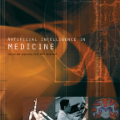Grasping a particular object may require a dedicated grasping movement that may also be specific to the robot end-effector. No generic and autonomous method does exist to generate these movements without making hypotheses on the robot or on the object. Learning methods could help to autonomously discover relevant grasping movements, but they face an important issue: grasping movements are so rare that a learning method based on exploration has little chance to ever observe an interesting movement, thus creating a bootstrap issue. We introduce an approach to generate diverse grasping movements in order to solve this problem. The movements are generated in simulation, for particular object positions. We test it on several simulated robots: Baxter, Pepper and a Kuka Iiwa arm. Although we show that generated movements actually work on a real Baxter robot, the aim is to use this method to create a large dataset to bootstrap deep learning methods.
翻译:切除某个特定对象可能需要专门的抓取运动, 这可能是机器人终端效应所特有的。 没有通用和自主的方法可以生成这些运动而不在机器人或物体上作出假设。 学习方法可以帮助自动发现相关的抓取运动, 但是它们面临一个重要问题: 抓取运动非常罕见, 以探索为基础的学习方法几乎没有机会观察有趣的运动, 从而产生一个靴子陷阱问题 。 我们引入了一种方法来生成不同的抓取运动, 以解决这个问题。 这些运动是在模拟中产生的, 对于特定的物体位置。 我们测试了几个模拟机器人: Baxter、 Pepper 和 Kuka Iiwa 臂。 尽管我们展示了在真正的巴克斯特机器人上产生的运动实际上是有效的, 目的是用这种方法创建大型的数据集, 以吸引深层学习方法 。



